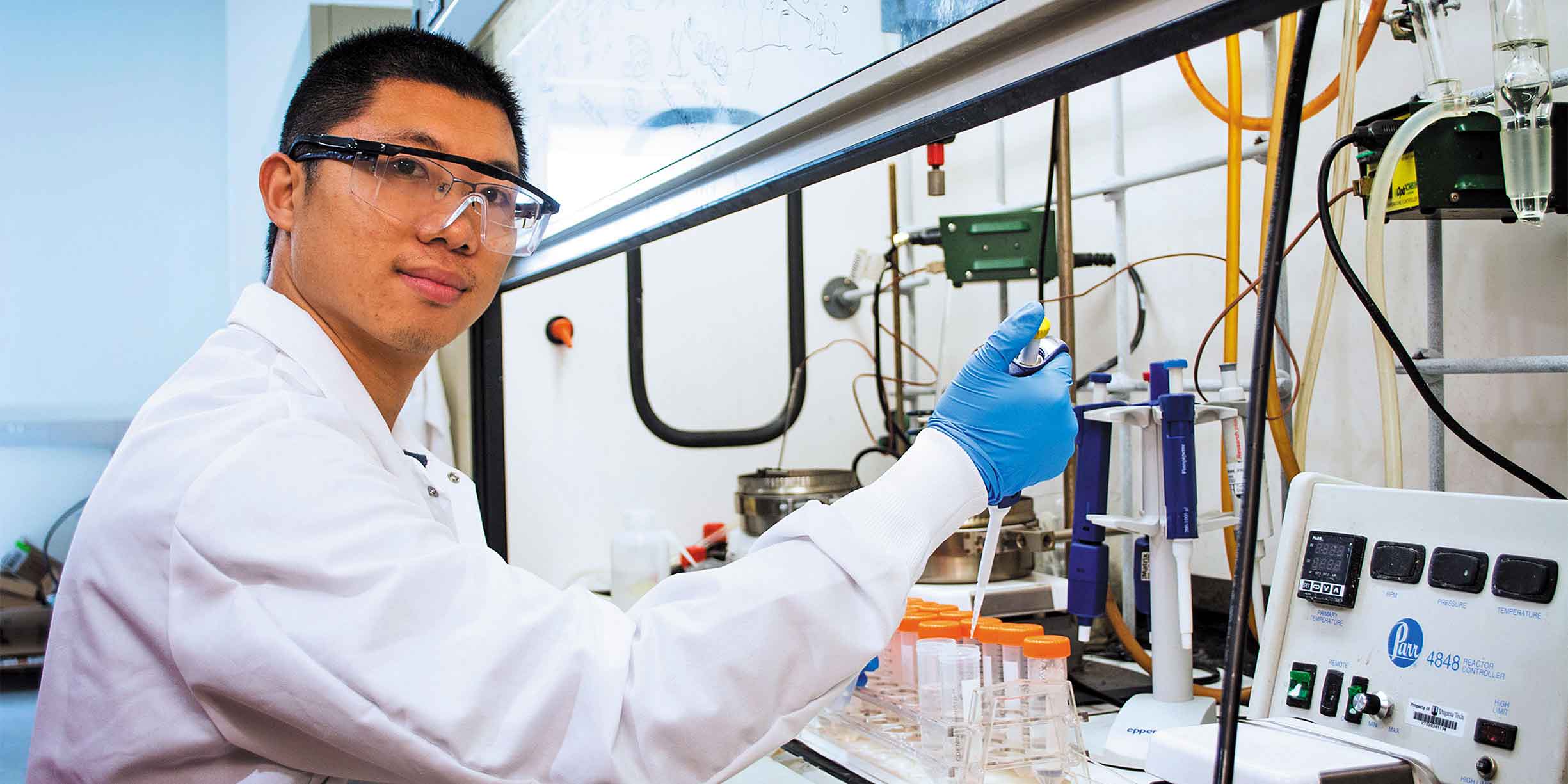Meng earns American Chemical Society award
November 15, 2015

In drug-delivery research, finding a pharmaceutically active molecule is only half the battle: the drug must also be able to safely reach its target. Xiangtao Meng of Shandong Province, China, a fourth-year graduate student in macromolecular science and engineering, has developed a new technique to make that easier. He devised a way to apply a famous class of chemical reactions to cellulose, a natural polymer often used for drug delivery. According to Professor Kevin Edgar, Meng’s advisor, the new method “can get drugs to market, and to patients, that would otherwise fail.”
Taking medications orally is typically much more practical for patients than methods like intravenous injections, but the bioavailability of a drug — the amount that actually reaches the bloodstream — often suffers. Suspending the drug in a polymer matrix can help, but finding the right polymer matrix involves making and testing many different options. Meng’s chemistry offers a new way to make a wide variety of polymer matrices using cellulose as a starting material. His method will allow chemists to use cellulose — a single, readily available, renewable starting material — to develop a wide variety of polymers specifically tuned to carry many different pharmaceutical targets.
Meng, who is part of the Macromolecules and Interfaces Institute and an Institute for Critical Technology and Applied Science doctoral scholar, recently won the American Chemical Society’s CELL Division Graduate Student Award for his work. The prestigious annual international award carries a cash prize and an invitation and funding to speak at the American Chemical Society’s annual meeting.



